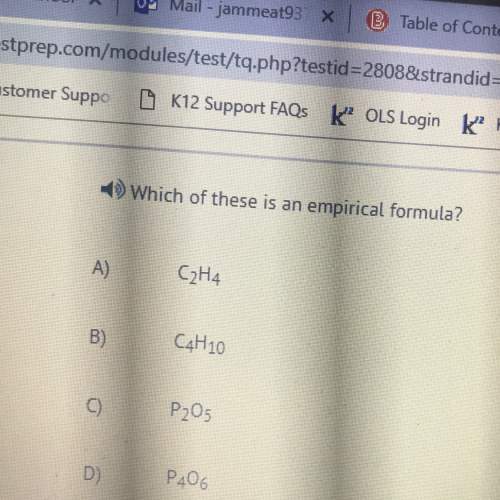
It was important that the flask be completely dry before the unknown liquid was added so that water present would not vaporize when the flask was heated. A typical single drop of liquid water has a volume of approximately 0.050 mL. Assuming the density of liquid water is 1.00 g/mL, how many moles of water are in one drop of liquid, and what volume would this amount of water be?

Answers: 3
Other questions on the subject: Chemistry

Chemistry, 21.06.2019 22:30, 20heldmadison
Hot air balloons float in the air because of the difference in density between cold and hot air. in this problem, you will estimate the minimum temperature the gas inside the balloon needs to be, for it to take off. to do this, use the following variables and make these assumptions: the combined weight of the pilot basket together with that of the balloon fabric and other equipment is w. the volume of the hot air inside the balloon when it is inflated is v. the absolute temperature of the hot air at the bottom of the balloon is th (where th> tc). the absolute temperature of the cold air outside the balloon is tc and its density is ďc. the balloon is open at the bottom, so that the pressure inside and outside the balloon is the same. as always, treat air as an ideal gas. use g for the magnitude of the acceleration due to gravity.
Answers: 1


Chemistry, 22.06.2019 14:40, sugardime
Choose an equation that represents an enzyme-catalyzed reaction. (a) enzyme + substrate → enzyme-substrate complex (b) enzyme + substrate ←−→ enzyme + products (c) enzyme + substrate ←−→ enzyme-substrate complex → enzyme + products (d) enzyme + substrate ←−→ enzyme-substrate complex → enzyme-substrate complex + products
Answers: 2

Chemistry, 22.06.2019 18:00, jeepjose58
What amount of heat is exchanged when 106.2 grams of substance y goes from a liquid at 35 degrees celsius to a solid at the same temperature? melting point of substance y = 35 degrees c; δhvaporization = 3.67 j/mol; δhfusion = 3.30 j/mol. mwsubstance y = 28.22 g/mol. −12.4 j −3.51 x 102 j 1.24 x 101 j 351 j
Answers: 1
Do you know the correct answer?
It was important that the flask be completely dry before the unknown liquid was added so that water...
Questions in other subjects:

Mathematics, 25.05.2020 03:57


Mathematics, 25.05.2020 03:57

Mathematics, 25.05.2020 03:57

Mathematics, 25.05.2020 03:57


History, 25.05.2020 03:57

English, 25.05.2020 03:57





 ( ideal gas equation )
( ideal gas equation )





